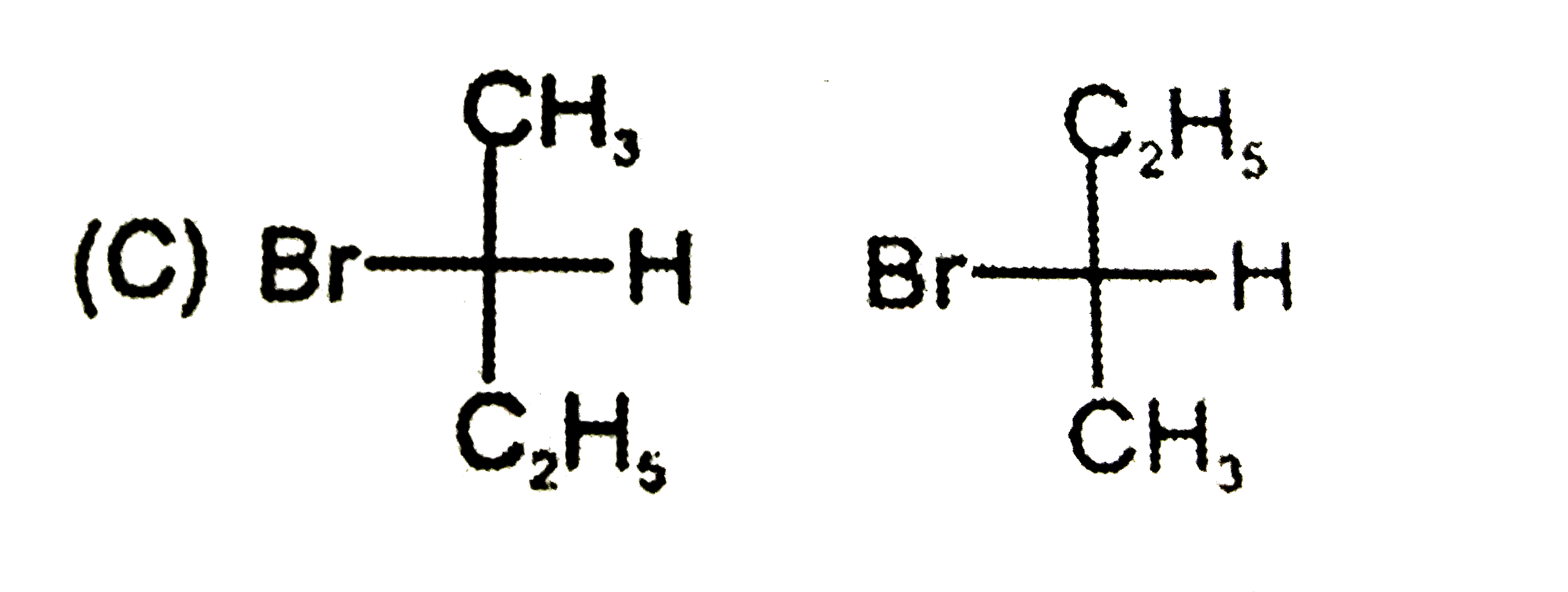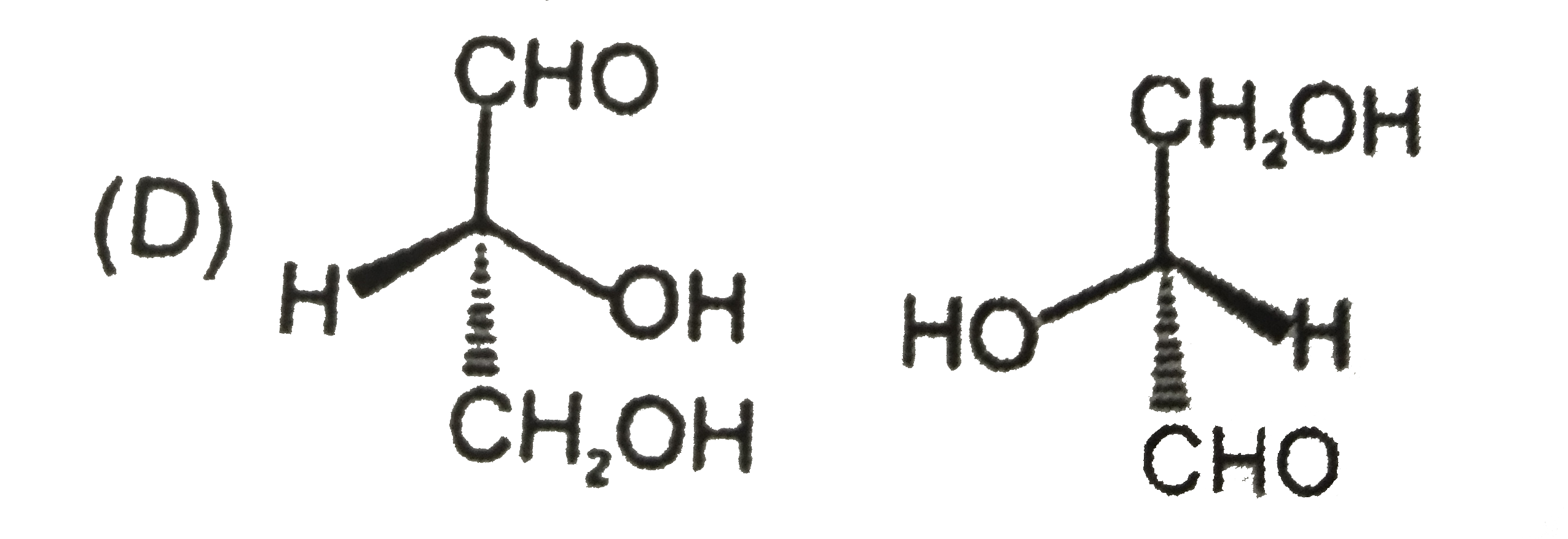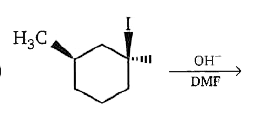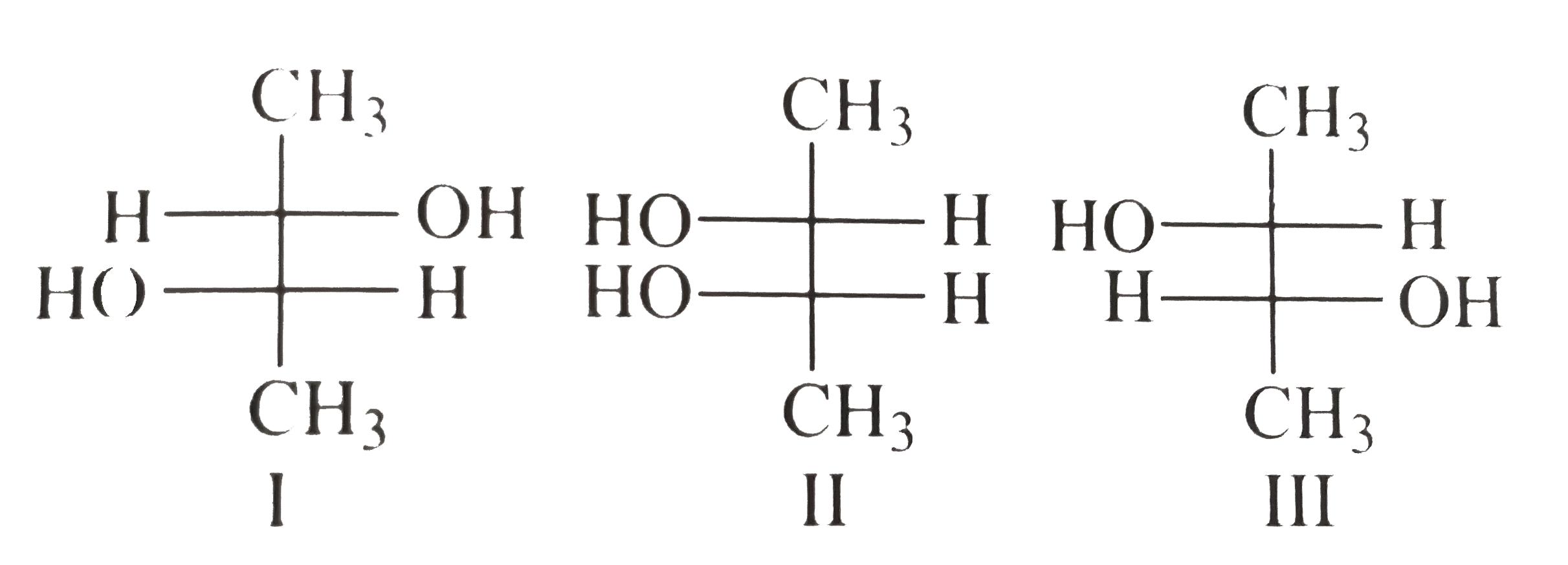Which is not the pair of enantiomers ?




The correct Answer is:D
To determine which pairs of compounds are not enantiomers, we need to analyze each option and check if they are superimposable mirror images of each other. Enantiomers are pairs of molecules that are non-superimposable mirror images.
1. Understanding Enantiomers:
- Enantiomers are stereoisomers that are mirror images of each other but cannot be superimposed. This means that if you place a mirror in front of one molecule, the reflection should represent the other molecule in the pair.
2. Analyzing Each Option:
- Option A:
- Molecule 1: CH3-C(Cl)(C2H5)-H
- Molecule 2: CH3-H-C(Cl)(C2H5)
- When you place a mirror, each substituent (Cl, CH3, H, C2H5) matches with its counterpart. Thus, these two are enantiomers.
- Option B:
- Molecule 1: COOH, H, CH3, OH
- Molecule 2: COOH, CH3, OH, H
- Again, placing a mirror shows that all groups match up correctly. Therefore, these are also enantiomers.
- Option C:
- Molecule 1: CH3, Br, H, C2H5
- Molecule 2: C2H5, Br, H, CH3
- Here, when you place a mirror, you notice that H is on one side and Br is on the other side, which means they cannot be superimposed. Thus, these are not enantiomers.
- Option D:
- Molecule 1: CHO, C2OH
- Molecule 2: C2OH, CHO
- When you place a mirror, the arrangement of groups does not match up. Therefore, these are also not enantiomers.
3. Conclusion:
- The pairs that are not enantiomers are Option C and Option D.
Final Answer:
- The pairs that are not enantiomers are Option C and Option D.
- Enantiomers are stereoisomers that are mirror images of each other but cannot be superimposed. This means that if you place a mirror in front of one molecule, the reflection should represent the other molecule in the pair.
- Option A:
- Molecule 1: CH3-C(Cl)(C2H5)-H
- Molecule 2: CH3-H-C(Cl)(C2H5)
- When you place a mirror, each substituent (Cl, CH3, H, C2H5) matches with its counterpart. Thus, these two are enantiomers.
- Molecule 1: COOH, H, CH3, OH
- Molecule 2: COOH, CH3, OH, H
- Again, placing a mirror shows that all groups match up correctly. Therefore, these are also enantiomers.
- Molecule 1: CH3, Br, H, C2H5
- Molecule 2: C2H5, Br, H, CH3
- Here, when you place a mirror, you notice that H is on one side and Br is on the other side, which means they cannot be superimposed. Thus, these are not enantiomers.
- Molecule 1: CHO, C2OH
- Molecule 2: C2OH, CHO
- When you place a mirror, the arrangement of groups does not match up. Therefore, these are also not enantiomers.
- The pairs that are not enantiomers are Option C and Option D.
- The pairs that are not enantiomers are Option C and Option D.
Topper's Solved these Questions
- STEREOISOMERISMBOOK - RESONANCE ENGLISHCHAPTER - STEREOISOMERISMEXERCISE - EXERCISE (PART II SECTION (G))
7 Videos
- STEREOISOMERISMBOOK - RESONANCE ENGLISHCHAPTER - STEREOISOMERISMEXERCISE - EXERCISE (PART II SECTION (H))
4 Videos
- STEREOISOMERISMBOOK - RESONANCE ENGLISHCHAPTER - STEREOISOMERISMEXERCISE - EXERCISE (PART II SECTION (E))
3 Videos
- SOLUTIONSBOOK - RESONANCE ENGLISHCHAPTER - SOLUTIONSEXERCISE - Advabced Level Problems (PART-2)
35 Videos
- STRUCTURAL IDENTIFICATIONBOOK - RESONANCE ENGLISHCHAPTER - STRUCTURAL IDENTIFICATIONEXERCISE - Advanced level Problems (Part-III)
12 Videos
Similar Questions
Knowledge Check
A pair of enantiomers is:
Aa pair of non superimposable mirror image of each otherBa pair of superimposable image of each otherCalways optically active if one is dextrorotatory then other will be laevorotatory by same magnitudeDcompounds having same boiling pointsWhich of the following represents a pair of enantiomers?
A B
B C
C D
D
Which reaction results in the formation ofa pair of enantiomers ?
A B
B C
C D
D
Identify the pair of enantiomers amongst the given pairs :
View SolutionIdentify the pairs of enantiomers and diastereomers from the following:

View SolutionThe two projection formulae that represent a pair of enantiomers are.

View SolutionIdentify the pairs of enantiomers and diastereomers from the following:

View SolutionWrite formulae for all the isomers of each of the following. Designate pairs of enantiomers and achiral compounds where they exist.
a. 1-Bromo-4- chlorocyclohexane
b. 1-Bromo-3-chlorocyclohexane
c. 1-Bromo-2- chlorocyclohexane
View Solution
